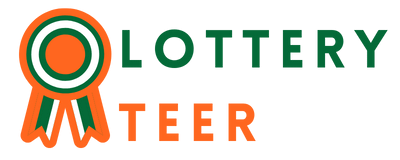Unraveling the Complexity of IV Set Pricing: Navigating Cost Considerations in Healthcare Procurement
Introduction:
In the labyrinthine world of healthcare procurement, the pricing of essential medical supplies such as Intravenous (IV) sets often remains shrouded in complexity. IV sets, indispensable tools for delivering fluids, medications, and nutrients directly into patients’ bloodstream, play a critical role in modern healthcare settings. However, understanding the factors that contribute to the varied pricing of IV sets is crucial for healthcare providers and administrators alike. In this exploration, we embark on a journey to unravel the luer lock intricacies of IV set pricing, navigating the multifaceted landscape of cost considerations in healthcare procurement.
The Significance of IV Sets in Healthcare:
Before delving into the nuances of IV set pricing, it’s imperative to underscore their indispensable role in patient care. IV sets serve as lifelines, facilitating the administration of crucial treatments and therapies across a spectrum of medical settings. From hospitals and clinics to ambulatory care centers and home healthcare environments, IV sets form the backbone of intravenous therapy, enabling healthcare professionals to deliver medications, fluids, and nutrients with precision and efficiency.
Factors Influencing IV Set Pricing:
- Quality and Reliability: The quality and reliability of IV sets are paramount considerations that significantly impact their pricing. Established brands renowned for their commitment to safety and efficacy often command higher prices, reflecting the confidence healthcare providers place in their products. Quality assurance measures, including stringent testing protocols and adherence to regulatory standards, contribute to the perceived value of branded IV sets.
- Manufacturing Processes and Materials: The materials used in the manufacturing of IV sets, including tubing, connectors, needles, and infusion pumps, play a pivotal role in determining their cost. Advanced manufacturing processes, coupled with investments in technology and innovation, contribute to higher production costs for some IV sets. Manufacturers may utilize specialized materials or incorporate features designed to enhance patient comfort and safety, further influencing pricing dynamics.
- Regulatory Compliance and Certification: Compliance with regulatory requirements and industry standards represents a foundational aspect of IV set manufacturing. Manufacturers must navigate a complex web of regulations established by regulatory bodies such as the Food and Drug Administration (FDA) in the United States and analogous agencies worldwide. Investments in regulatory compliance, including product testing, documentation, and quality management systems, contribute to the overall cost structure of IV sets.
- Market Competition and Supply Chain Dynamics: The competitive landscape within the healthcare industry exerts a significant influence on IV set pricing. Manufacturers may adjust their pricing strategies in response to market dynamics, including shifts in demand, competition from generic alternatives, and evolving consumer preferences. Additionally, supply chain dynamics, encompassing raw material costs, transportation expenses, and inventory management practices, contribute to the final price of IV sets.
Navigating Cost Considerations in Healthcare Procurement:
Amidst the complexity of IV set pricing, healthcare providers and administrators must navigate a myriad of cost considerations while ensuring optimal patient care. By adopting a strategic approach to procurement, stakeholders can effectively balance cost efficiency with quality and patient safety. Key strategies for navigating cost considerations in healthcare procurement include:
- Value-Based Decision Making: Prioritizing value-based decision-making entails evaluating the total cost of ownership, encompassing not only the upfront price of IV sets but also factors such as reliability, durability, and long-term performance. By focusing on the value proposition offered by IV sets, healthcare providers can optimize resource allocation while mitigating the risk of costly disruptions in patient care.
- Collaborative Supplier Relationships: Cultivating collaborative relationships with suppliers fosters transparency and mutual understanding, enabling healthcare providers to negotiate favorable pricing agreements and explore innovative solutions. By engaging in open dialogue and information sharing, stakeholders can leverage the expertise of suppliers to identify cost-saving opportunities and drive continuous improvement in procurement practices.
- Data-Driven Analytics: Leveraging data-driven analytics empowers healthcare organizations to gain insights into spending patterns, identify cost drivers, and optimize procurement processes. By harnessing the power of data analytics tools and platforms, administrators can make informed decisions regarding inventory management, supplier selection, and contract negotiations, ultimately driving efficiency and cost savings.
- Standardization and Rationalization: Standardizing and rationalizing the selection of IV sets across healthcare facilities can streamline procurement processes, reduce inventory complexity, and leverage economies of scale. By consolidating purchasing volumes and standardizing product specifications, organizations can negotiate favorable pricing terms with suppliers and mitigate the risk of product proliferation and maverick spending.
Conclusion:
In the ever-evolving landscape of healthcare procurement, unraveling the complexity of IV set pricing represents a pivotal challenge for stakeholders across the continuum of care. By embracing a holistic approach to cost considerations, healthcare providers and administrators can navigate the intricacies of IV set procurement while safeguarding patient safety and optimizing clinical outcomes. Through strategic collaboration, data-driven decision-making, and a steadfast commitment to value-based principles, stakeholders can unlock new opportunities for innovation, efficiency, and sustainability in healthcare procurement. As the healthcare industry continues to evolve, the journey towards unraveling the complexity of IV set pricing serves as a testament to the transformative power of strategic procurement practices in shaping the future of healthcare delivery.





